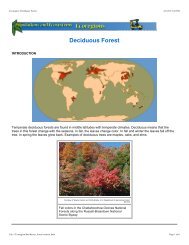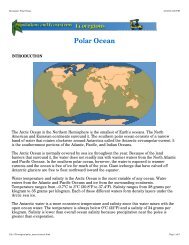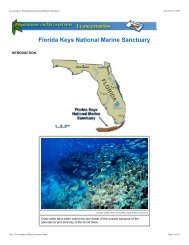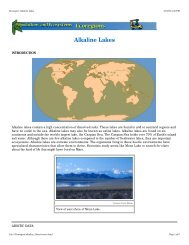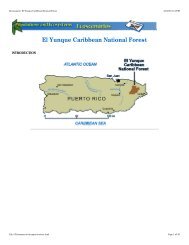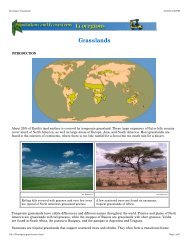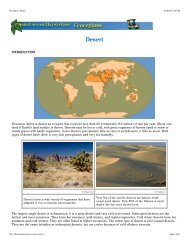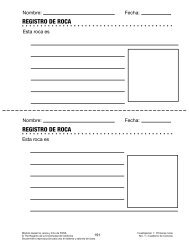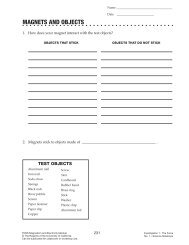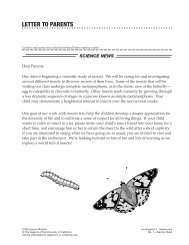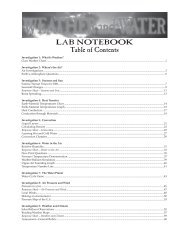Ecoscenarios Combined - FOSSweb
Ecoscenarios Combined - FOSSweb
Ecoscenarios Combined - FOSSweb
Create successful ePaper yourself
Turn your PDF publications into a flip-book with our unique Google optimized e-Paper software.
Ecoscenario: Florida Keys National Marine Sanctuary<br />
4/16/03 3:17 PM<br />
Courtesy of NOAA, Atlantic and Meteorological Laboratory<br />
Hurricane Irene passed over the Florida Keys and southern Florida in October 1999.<br />
Even though the Florida Keys National Marine Sanctuary is so large and productive, it does not have as much coral<br />
coverage as other coral reefs. Many of the corals here are at the edge of their range of temperature tolerance. They<br />
would be unable to live even a little farther north. They can live here only because currents from the south bring<br />
warm water year-round, and the tropical marine climate area keeps the air warm and humid.<br />
The sanctuary is near the Gulf Stream, which is a strong northward current. The Loop Current of the Gulf of Mexico<br />
and the Florida Current both merge with the Gulf Stream, bringing with them warm water from the Caribbean, South<br />
America, and Florida Bay. The convergence of these currents creates large, spinning, counterclockwise eddies in<br />
the ocean called gyres.<br />
The water of the Florida Keys has salinity ranging between 3.3 and 3.6%. Average ocean water is 3.5%. Salinity<br />
increases when there are dry conditions in south Florida. Low amounts of rain and runoff mean less water to dilute<br />
the concentration of salt in the ocean. Evaporation further concentrates the salt, and the salinity increases.<br />
In general, water in tropical regions such as Florida Keys National Marine Sanctuary is nutrient poor. Runoff from<br />
land, both residential and agricultural, can increase the concentration of nutrients present, and can carry pollutants.<br />
BIOTIC DATA<br />
The core of a coral reef is a buildup of skeletal material of the coral polyp. Coral polyps are tiny, soft, sea anemone–<br />
like animals that build a cup of calcium carbonate around themselves for protection. Thousands of these tiny polyps<br />
build their skeletons together in a colony. The colony continually builds on old skeletons and can over time become<br />
file:///Ecoscenario/flakeys/content.html<br />
Page 6 of 18



